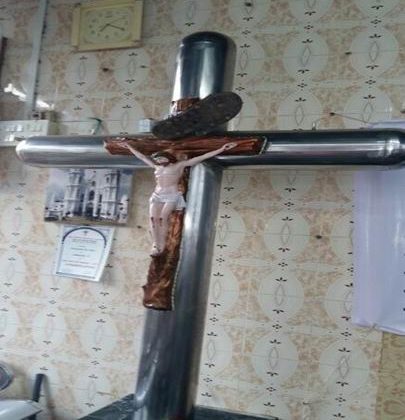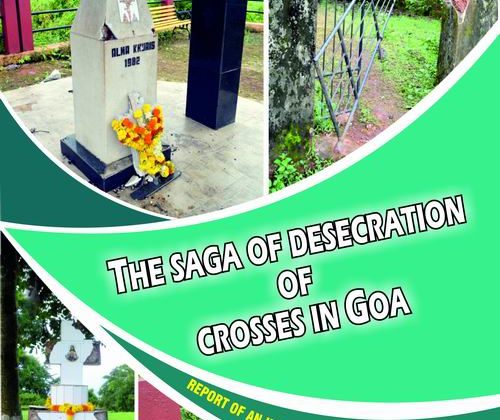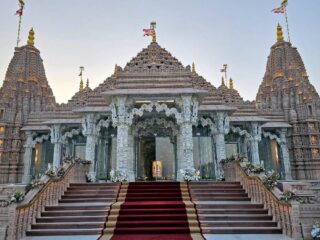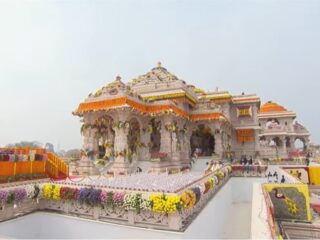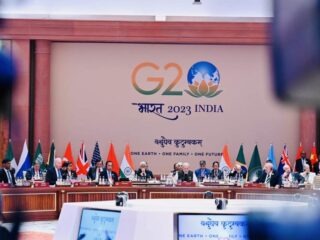Irfan Engineer
(Secular Perspective, June 1-15, 2017)
Three years of Modi sarkar has meant decreased political representation, increased insecurity, increased stigmatization of the community and increased economic marginalization of Muslims. This is despite the slogan “sabka saath sabka vikas” used during the campaign.
The present (16th) Lok Sabha has lowest number of Muslim Members – 23 or a little over 4% whereas they constitute 14.2% of India’s population. The ruling party does not have a single elected Lok Sabha member from the Muslim community. There are only 20 Muslim members of Rajya Sabha, 2 of which are from the BJP. There are no Muslim ministers of Cabinet rank and two ministers of state – MJ Akbar in Ministry of External Affairs and Mukhtar Abbas Naqvi in Ministry of Minority Affairs. In the recently held elections for UP Assembly, BJP did not field a single Muslim candidate. BJP won in 325 Assembly constituencies out of 403. In all, only 24 Muslims were elected to UP Assembly (5.9%) even though they are 19.1% of UP’s population. Muslim representation has fallen in other states too, including Assam.
Lack of adequate representation of Muslims in important institutions of democracy that formulate laws, rules and policies, and shape lives of the people of the country, means that the country is deprived of the perspective, understanding and knowledge that the community has. Common people in India feel reassured taking their day to day problems and issues pertaining to access to infrastructure (e.g. primary health centres, anganwadis, roads, sewerage etc.), welfare schemes, necessary documents (e.g. BPL cards), bank loans, govt. contracts, licences, admissions in educational institutions, etc. for redressal to representatives from their own caste and community. The caste and community network helps one access and avail of various schemes and participate in governance. Less representation in governance limits participation in and availing benefits of governance and result in increased marginalization of the caste or the community. Overwhelming majority of members of the Muslim community is experiencing increased economic marginalisation.
Overwhelming sections of the Muslim community are from dalits and OBCs, self employed like hawkers, barbers, dhobis etc.; or artisans – weavers, carpet workers, zari workers, embroidery workers, bangle industry, brassware industry, etc. There is a tiny section of business entrepreneurs and a small middle class. While a negligible tiny section of Muslim entrepreneurs may have benefitted from the growth of GDP in the last three years since PM Modi was elected, overwhelmingly large section of Muslim artisans, child labourers, Muslim dalits engaged in scavenging, or other such less paid casual work, hawkers, have been further marginalized. Their ability to access welfare schemes is limited in view of reduced political representation.
Increased marginalization
Sachar Committee Report had pointed out Muslims in higher education were less than 4%, they were less than 2% in public sector and higher bureaucracy, and their access to welfare schemes was much below their population proportion. This is partly due to lack of sensitivity of bureaucrats and policy implementers to include all sections of society and exercise their discretion impartially and fairly. To arrest this trend, UPA led Government set quotas to include minorities. Expectedly, the quotas for minorities have been done away with. Yogi Adityanath e.g. scrapped the 20% quota in some welfare schemes for Muslim. This will signal bureaucrats to by and large ignore the claims from minorities.
The budgetary allocation for Minorities almost stagnated and with inflation, reduced in real terms. In the 2015-16 budget, there was no significant (Rs.4 crore) increase in allocation for minorities. On the other hand, the government has decreased the allocation in the revised budget by about Rs.569 crore which affected the functioning of schemes like MSDP and scholarship programmes in 2014-15. (Khan, 2015). The Budget Estimate for the year 2015-16 is Rs 3,738 crores. The revised estimate for current year 2014-15 was Rs 3,165 crores as against the budgetary allocation of Rs 3,734 crores. (Jafri, 2015). The Minister of Minority Affairs Ms. Najma Heptullah was more concerned with spending money on schemes to incentivise increased fertility of the Parsi community than lack of livelihood and education among other socially and educationally backward minorities.
Increased Stigmatization
One of the reasons for decreased political representation of Muslims is their stigmatization by the Sangh Parivar profiling them as community of traitors, loyal to Pakistan, terrorists, Islam being “foreign religion” Islamic identity and Muslim personal law is divisive and beef eaters slaughterers of cow considered holy by the Hindus. They further propagate that Muslims practicing polygamy are multiplying like rabbits and Hindus would soon be minority in “their own country”.
The diffusion of Hindu nationalist consciousness is more rapid and its influence can be seen particularly on the lower middle class urban youth and the rural elite. Ruling party MPs and even ministers are making statements punishable under Sec. 153A of IPC for promoting ill-will, hatred or enmity on the basis of religion. They include Giriraj Singh, Sakshi Maharaj, Yogi Adityanath, Sadhvi Prachi and others. The statements widely reported, range from calling those not following Lord Ram (Hindus) as illegitimate offsprings, calling Madrasas as dens of terrorism, calling upon Hindu women to produce at least 4 children to beat the Muslims in their demographic designs, and that those who did not vote for Modi (read Muslims), should settle in Pakistan. The discourse demonizing minorities is being normalized and soon it would also be accepted as truth which does not need any verification.
Campaign for ghar wapsi (conversion to Hinduism) was undertaken wherein even the RSS Chief Mohan Bhagwat spoke in despicable terms justifying coercive conversion of non-Hindus to Hindu religion in Agra reducing Muslims to chattels stating hamara mal wapas kardo (return our property – Hindus converted to Islam several generations and centuries ago). The Home Minister instead of taking action against those converting fraudulently or by coercion or by inducement from other religion to Hinduism called for anti-religious conversion law. Nineteen Muslims were converted on April 23, while 24 more were converted on May 20. Both sets of conversions took place in a temple in Faizabad, even though all the converts were from Ambedkar Nagar, said Surendra Kumar, an RSS worker in Ambedkar Nagar district, who helped organise the ceremony (Scroll.in 2017). Surendra Kumar who got the Muslims for conversion to Hinduism said, “I had been working on them for several years, but once Yogiji became the chief minister, convincing them that they could live without fear if they converted to Hinduism became easier for me.”
Similarly open campaigns were taken to coercively prevent marriages of Hindu girls with non-Hindus against the will of the couple. They did not want to appear as villains and hence they alleged that all such marriages involving Hindu bride and non-Hindu grooms were calculated ‘love jihad’ – a conspiracy to reduce Hindu population. Needless to say that there was never any substantiation of such allegations. Those demonizing the minorities and attributing anti-Hindu conspiracy to love affair that is so natural at that age. Bharat Raut, editor of Shiv Sena owned daily – Samnaa wrote in his article asserting that Muslims should be disenfranchised. Such an assertion is punishable under Sec. 153B of IPC. No FIR was filed and no action taken by the State Govt.
All this is normalizing the discourse of Hindu nationalists spewing hatred against non-Hindus. This is diffusing Hindu nationalist consciousness which in turn is justifying construction of a cultural nationalist authoritarian state. Modi sarkar through the President gave its assent to the anti-cow slaughter legislations which is handy to harass the minorities and reduce them to second class citizens. The cultural nationalist state reduces the citizens to subject status some having a sense of privilege while others openly second class subjects and this in turn facilitates free market and aggressive capitalism.
Growing insecurity
The feeling of insecurity has increased in the Muslims not only because their demonization is becoming a norm but they are being lynched, and beaten by gau rakshaks. There have been communal riots too. The number of deaths in the communal violence may have decreased, but the number of incidents has been increasing. In 2014 there were 561 incidents of communal violence in which 90 people were killed and 1,688 people were injured according to MHA data. In 2015, there were 751 incidents of communal violence in which 97 people were killed and 2,264 persons were injured according to Home ministry figures. The MHA data is available only till the month of May for communal incidents in which there were 278 incidents and 38 people were killed and 903 injured. This year communal violence were reported from Vadavali in Gujarat and Dudhli Village in Saharanpur. There are large number of minor incidents of communal violence which keeps the communal pot boiling and communalized discourse going in the media to polarize the society.
Political objective of BJP, as Subramanian Swamy from BJP once said, to unite the Hindus and divide the Muslims along sectarian lines – Shia and Sunnis and Sunnis into Sufis and Wahabis, thus isolating the Wahabis. Using the triple talaq issue the BJP is trying to divide the Muslims along gender lines as well. In order to unite Hindus politically, divided as they are along caste lines, BJP needs a cause and a symbol. Misusing “nationalism” as a cause and cow as a symbol, BJP exonerates violence on minorities. Violence by Hindu nationalists demonstrates the prowess of those following Hindutva ideology and renders the victims of violence as second class citizens.
In 2015, there were two incidents of lynching of Muslims by the so called gau rakshaks in which Mohammed Akhlaq was killed in Dadri lynching and 10 people, including police were injured in Haryana, Dist. Palwal. In 2016 there were 3 incidents in which one Hindu and three Muslims were killed, and 2 Muslims were injured. In 2017 Pehlu Khan was killed by gau rakshak lynchers and 9 were injured. Ghulam Mohammad an elderly person was lynched to death because his relative eloped with a Hindu girl!
In 2016, a global index of human rights and social and religious freedoms by Pew Research Center placed India among the worst 10 of the world’s 198 countries when judged for ‘social hostilities’. The ban on sale of beef in many states, forced conversions to Hinduism, the brutal violence of gau rakshaks and the harassment and intimidation of human rights defenders are most common human and minority rights abuses.
There is also a positive dimension in this bizarre scenario. The weakening of Muslim patriarchal forces, as evident in the triple talaq issue is the silver lining. If the worst times nudges the community to embark upon social reforms and gender justice and education could be a good outcome.
———————————————————
Centre for Study of Society and Secularism
Mumbai

